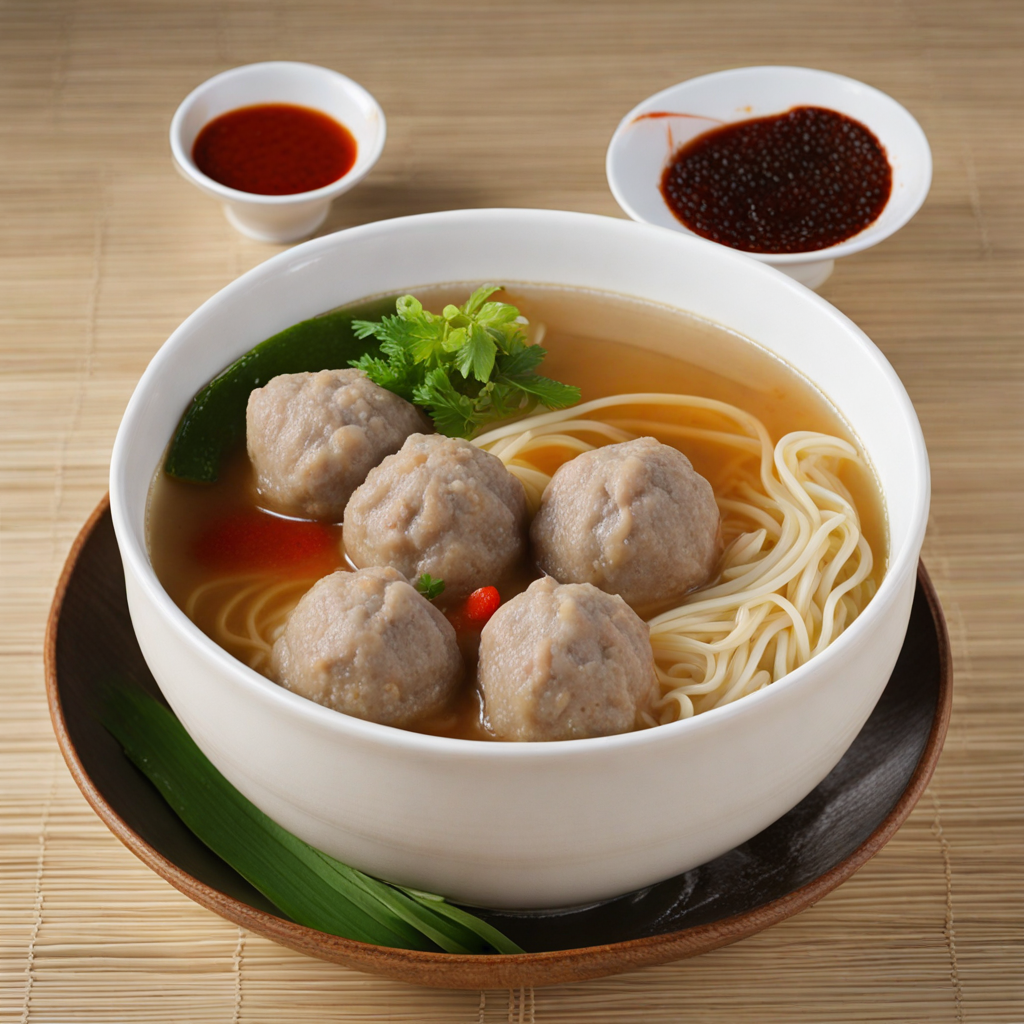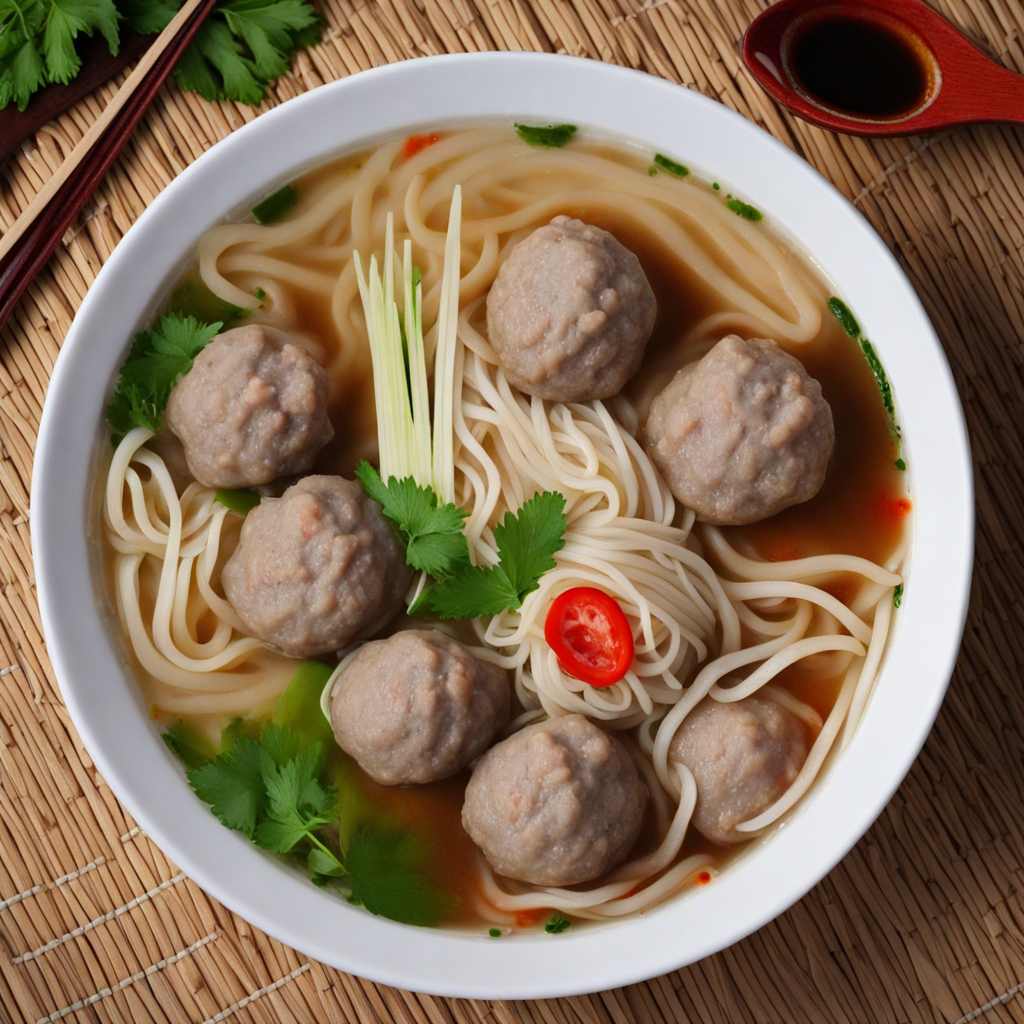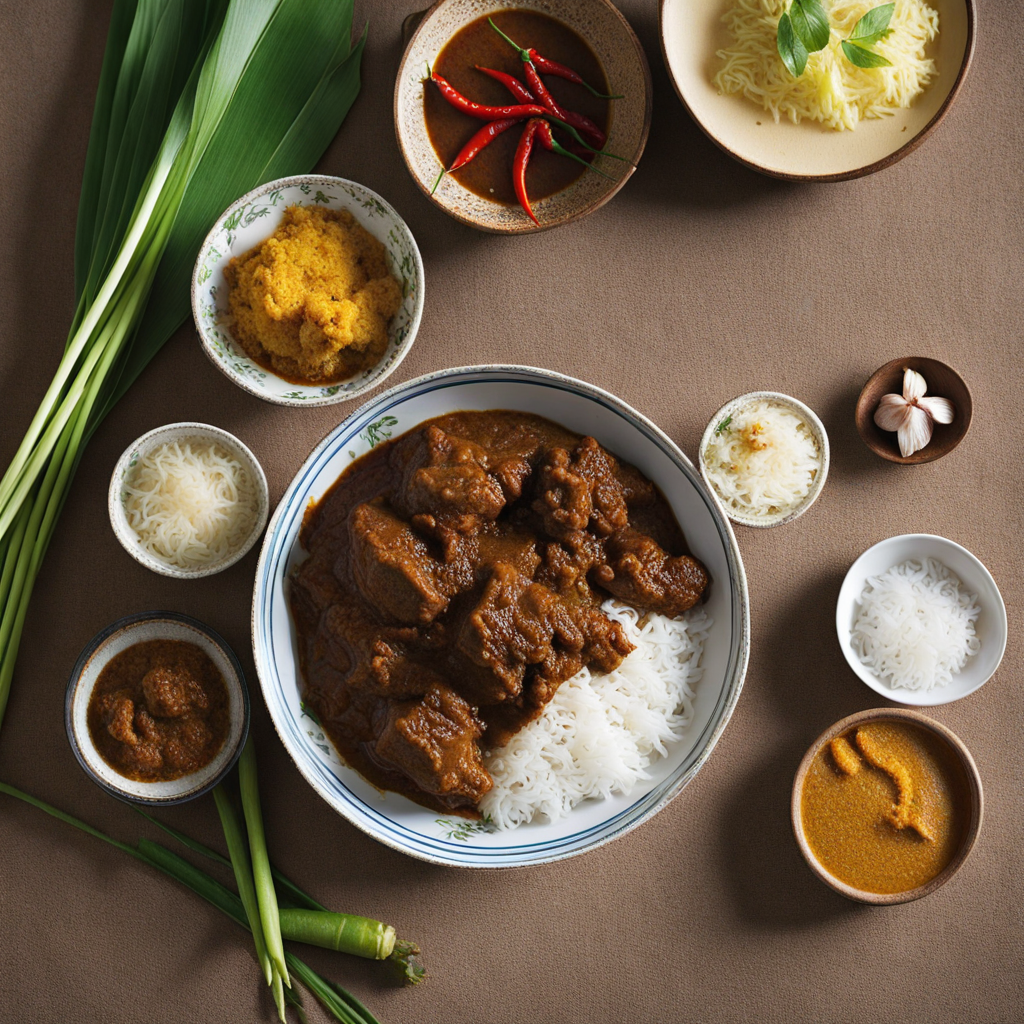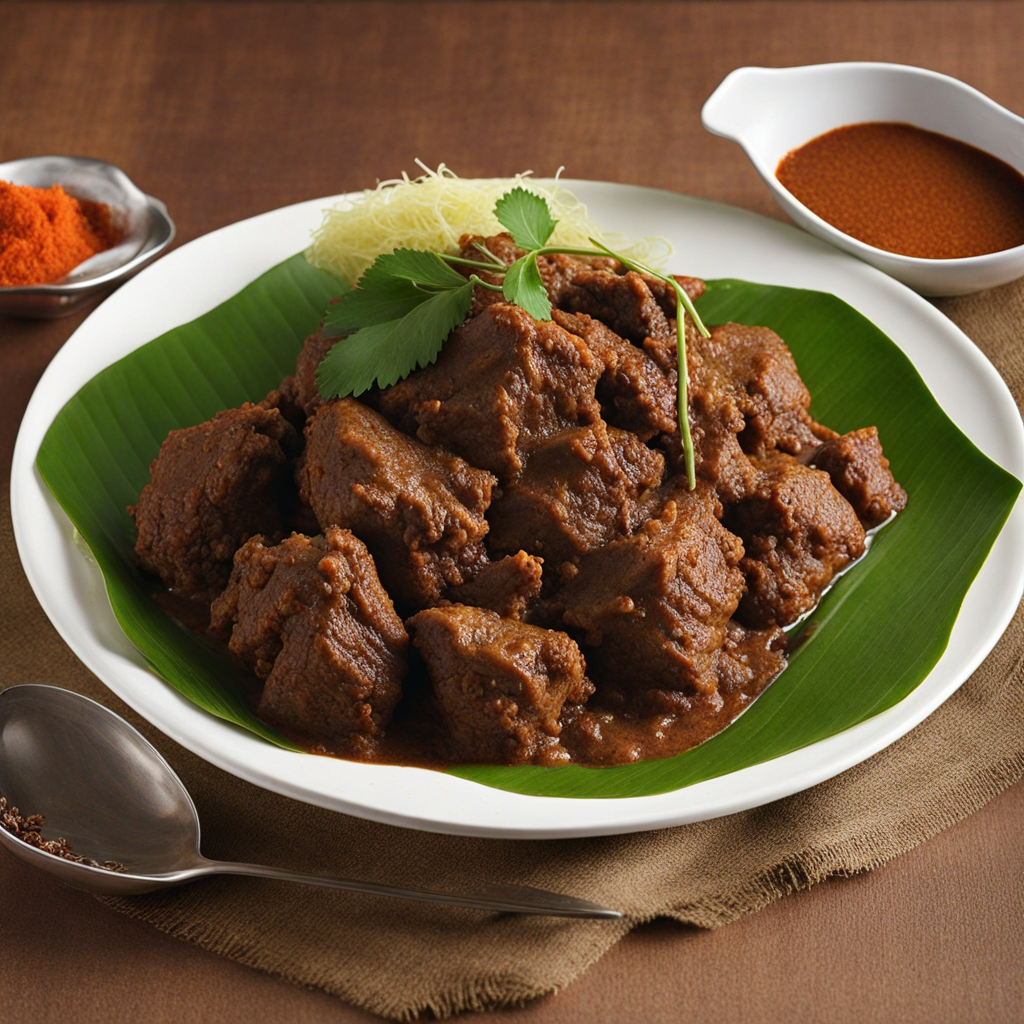Bakso
Bakso is a beloved Indonesian meatball soup that holds a special place in the hearts of many, not only for its comforting flavors but also for its cultural significance. Originating from Chinese cuisine, bakso has evolved over time, adapting to local tastes and ingredients. While the precise timeline is difficult to pin down, it is widely believed that bakso was introduced to Indonesia by Chinese immigrants in the early 20th century, particularly from the Hakka community. Since then, it has become a quintessential street food, enjoyed by people from all walks of life across the archipelago. The flavor profile of bakso is rich and savory, with a delightful umami depth that comes from the combination of well-seasoned meat and broth. The meatballs are typically made from a mixture of finely ground beef, chicken, or pork, combined with tapioca starch, which gives them a distinctive bouncy texture. The broth, often made from simmered beef bones, is clear yet flavorful, infused with aromatic spices like garlic, ginger, and sometimes, a hint of nutmeg. The addition of soy sauce, chili sauce, and lime juice at the table allows eaters to customize the flavor to their liking, adding layers of heat and acidity. The preparation of bakso is a meticulous process that starts with the creation of the meatballs. The meat is finely minced and mixed with tapioca flour, salt, and various spices, then kneaded until it achieves a smooth, elastic consistency. These meatballs are
How It Became This Dish
Origin of Bakso Bakso, a beloved Indonesian meatball dish, has its roots in the culinary traditions of the Chinese immigrants who settled in Indonesia. The word "bakso" itself is derived from the Hokkien dialect, where "bak" means meat and "so" refers to balls or round shapes. This dish is believed to have emerged in the early 20th century, primarily in Java, as the Chinese community sought to adapt their recipes to the local ingredients and tastes. Initially, bakso was made using minced beef, seasoned with various spices and herbs, and formed into small balls. The meatballs were then boiled and served in a broth, often accompanied by noodles and vegetables. The dish quickly gained popularity among the local population due to its rich flavor and comforting qualities, and it evolved from a niche ethnic specialty into a mainstream delicacy enjoyed by all Indonesians. \n\n Cultural Significance Bakso is more than just a dish; it holds a significant place in Indonesian culture and social life. It is often seen as a street food staple, found at numerous roadside stalls and in bustling markets across the archipelago. The accessibility and affordability of bakso make it a popular choice for people from all walks of life, from street vendors to middle-class families. The communal nature of enjoying bakso—often shared among friends and family—highlights its role in fostering social connections and community bonding. Furthermore, bakso has become symbolic of Indonesian culinary diversity. As the dish spread across the country, regional variations emerged, incorporating local ingredients and flavors. This adaptability has made bakso a canvas for creativity, allowing it to reflect the unique culinary traditions of different Indonesian regions, from the spicy variations in Sumatra to the sweeter versions found in Bali. \n\n Development Over Time Over the years, bakso has undergone significant transformations. The original beef meatballs have been joined by a variety of alternatives, including chicken, fish, and even vegetarian options, catering to the changing dietary preferences and cultural influences within Indonesia. The rise of health consciousness among consumers has also led to the introduction of healthier variants, such as using leaner cuts of meat or adding more vegetables to the mix. The preparation of bakso has also seen modernization. While traditional methods involve hand-rolling the meatballs, many vendors now utilize machinery for efficiency, allowing them to produce larger quantities. This commercialization has led to a proliferation of bakso stalls, each boasting their unique recipes and methods. Today, one can find bakso served in many forms, from classic soup versions to innovative takes, such as bakso goreng (fried meatballs) or bakso bakar (grilled meatballs). \n\n Regional Variations As bakso spread throughout Indonesia, distinct regional variations emerged, highlighting the local flavors and culinary traditions. In East Java, for instance, bakso is often served with a spicy chili sauce known as sambal, enhancing the overall flavor profile. Meanwhile, in Jakarta, the capital city, bakso is commonly accompanied by a rich broth, noodles, tofu, and more elaborate garnishes like fried shallots and green onions. In addition to these regional differences, bakso has also inspired a variety of fusion dishes. Creative chefs experiment with international flavors, blending bakso with Western ingredients or techniques. For example, bakso burgers or bakso pasta have gained popularity in urban areas, showcasing the dish's versatility and appeal to a global audience. \n\n Bakso in Modern Society In contemporary Indonesia, bakso continues to thrive as a significant part of the food landscape. It enjoys a devoted following, not only as a street food staple but also as a centerpiece in food festivals and culinary competitions. The popularity of bakso has even led to the establishment of dedicated bakso restaurants, where chefs elevate the dish to gourmet levels, offering unique twists and high-quality ingredients. Social media has played a crucial role in the resurgence of bakso's popularity. Food enthusiasts share their bakso experiences online, showcasing various renditions and regional specialties. This digital visibility has helped bakso reach a global audience, with many food lovers eager to try authentic Indonesian bakso when visiting the country or to recreate the dish at home. \n\n Conclusion Bakso not only represents a delectable culinary tradition but also embodies the rich tapestry of Indonesian culture and history. Its journey from a humble street food dish to a celebrated national treasure illustrates the dynamic nature of food and its ability to adapt and evolve over time. As bakso continues to inspire new generations of food lovers, it remains a testament to Indonesia's vibrant culinary heritage, inviting all to savor its unique flavors and the stories it tells.
You may like
Discover local flavors from Indonesia







